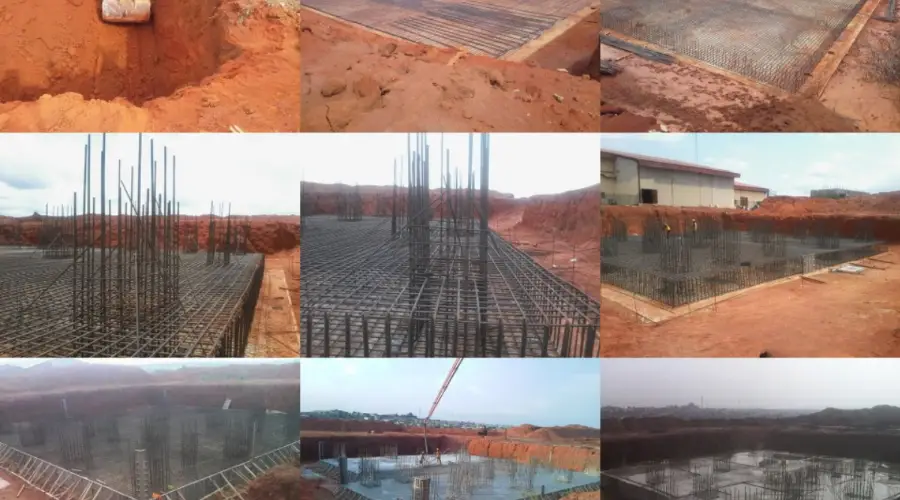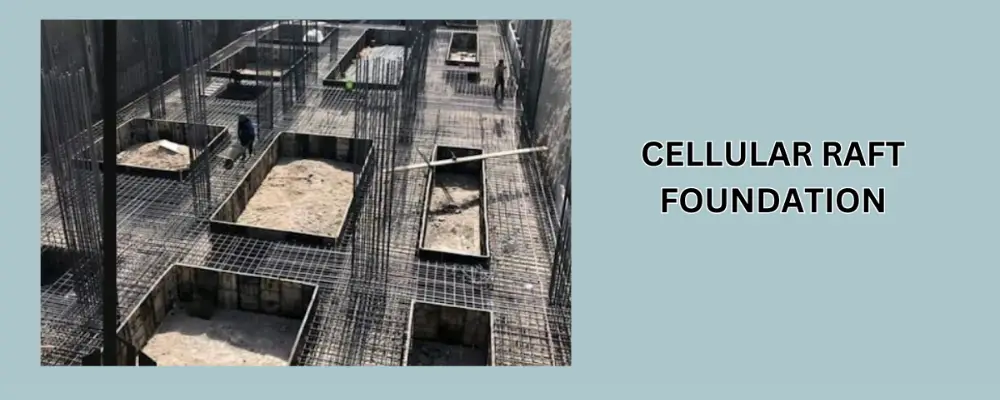A cellular raft foundation is a smart solution for structures that need to be supported on tricky soil. Think of it as a reinforced concrete slab with a network of beams underneath, forming a grid with voids. This setup spreads the weight of a building evenly across the ground, helping to keep everything stable. They are also referred to as buoyancy raft foundations.
What is a Cellular Raft Foundation?
It is a type of foundation that adds strength and balance to the structure. The grid of beams under the slab acts like a built-in support system, giving the foundation stiffness and durability. By spreading the building’s weight more evenly, it reduces the risk of uneven settling, which can cause cracks and instability over time. Essentially, it ensures the foundation can support the building even in tricky soil.
When to Use a Cellular Raft Foundation
When soils weaken or tend to shift considerably, this is a well-suited type of foundation. For very heavy building structures, including skyscrapers and other industrial sites, it becomes perfect, especially when located in areas that tend to vibrate due to an earthquake. A cellular raft foundation proves to be suitable when strong ground forces are required to shake things a bit. In simpler terms, a foundation such as this should be used when the ground does not provide much consistency or if a building requires extra support.
Advantages of Cellular Raft Foundations
Even load distribution : The greatest advantage of a cellular raft foundation is that it spreads the load evenly and prevents settlement in the structure.
Strength and durability : It is also very tough and long-lasting due to its design, taking both heavy loads and challenging soil conditions.
Versatility: It is highly versatile; whether the project involves poor soil or a complex structure, this foundation can adapt to those needs.
Disadvantages of Cellular Raft Foundations
Although there are several advantages of a cellular raft foundation, there are drawbacks too.
High Cost: Cellular raft foundations can be pricey. They require more materials and skilled labour, which increases the overall costs.
The complicated process of construction: The design and construction process is also more complicated than a standard foundation, requiring precise engineering and extra time to build.
Process of Constructing Cellular Raft Foundations

The process of constructing a cellular raft foundation is detailed in a series of steps below:
Site Survey and Investigation:
The construction process demands that a thorough survey of the site and soil investigations be conducted to determine the characteristics of the soil. Critical information for designing the foundation system is gathered at the initial stage.
Excavation:
The soil is excavated to remove any soft or unstable soil layers and achieve the desired depth. This step ensures a stable base for the foundation.
Compaction:
A layer of compacted granular material is placed at the bottom of the excavated soil to provide a stable base.
Formwork Installation:
Formwork is installed to define the shape and dimensions of the cellular raft. The internal cells are created using removable or collapsible formwork, which allows for flexibility in design.
Reinforcement Placement:
Steel reinforcement bars are strategically placed within the cells to enhance the structural integrity of the foundation. This reinforcement is essential for supporting the loads from the superstructure.
Concrete Pouring:
High-quality concrete is poured into the formwork, ensuring proper compaction to eliminate voids and gaps that could weaken the foundation. The concrete must be allowed to cure adequately to achieve its full strength.
Waterproofing Measures:
To protect against water seepage, waterproofing membranes may be applied on the underside of the foundation slab during construction.
Curing:
The concrete must undergo a curing process that maintains appropriate moisture and temperature levels to ensure optimal strength development.
Design Considerations for Cellular Raft Foundations
Planning a cellular raft foundation requires great precision. Before a cellular raft foundation is designed, certain things must be taken into account.
- Soil Type and Characteristics: Engineers study the soil for the site to ensure the foundation is designed specifically for it.
- Structural Weight: They also compute how heavy the building will be and accordingly how strong the foundation needs to be.
- Building Materials: Materials used must be of good quality because the foundation will have to be tough and reliable.
- Drainage system: Water will undermine the structure, so a good drainage system must also be present.
- Cost considerations: The structure needs to be optimised for cost and time, as it involves labour.
Conclusion
A cellular raft foundation is a powerhouse of stability and durability in conditions of very poor soil or heavily demanding structures. It does require more time, money, and expertise to put it together, but the reward is a foundation that will easily support heavy loads under tricky conditions. When properly done, it is an excellent method of supporting a building for decades to come.
FAQs
The rigidity of the cellular raft foundation makes it the ideal candidate to support structures on loose soil.
This depends on the area of the building and the depth of the foundation.
The cellular raft foundation requires a hardcore sub-base level, steel reinforcements, and insulation to ensure durability

